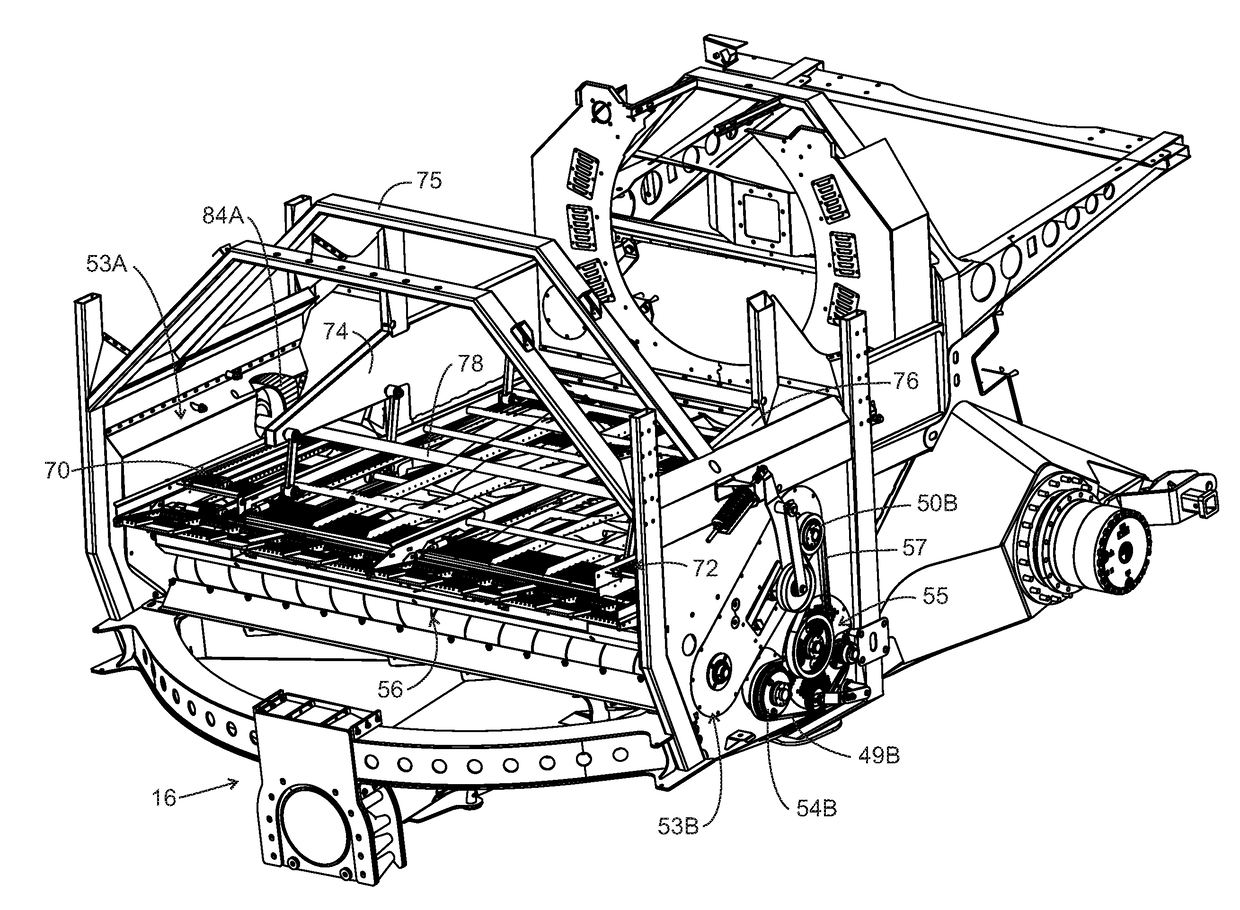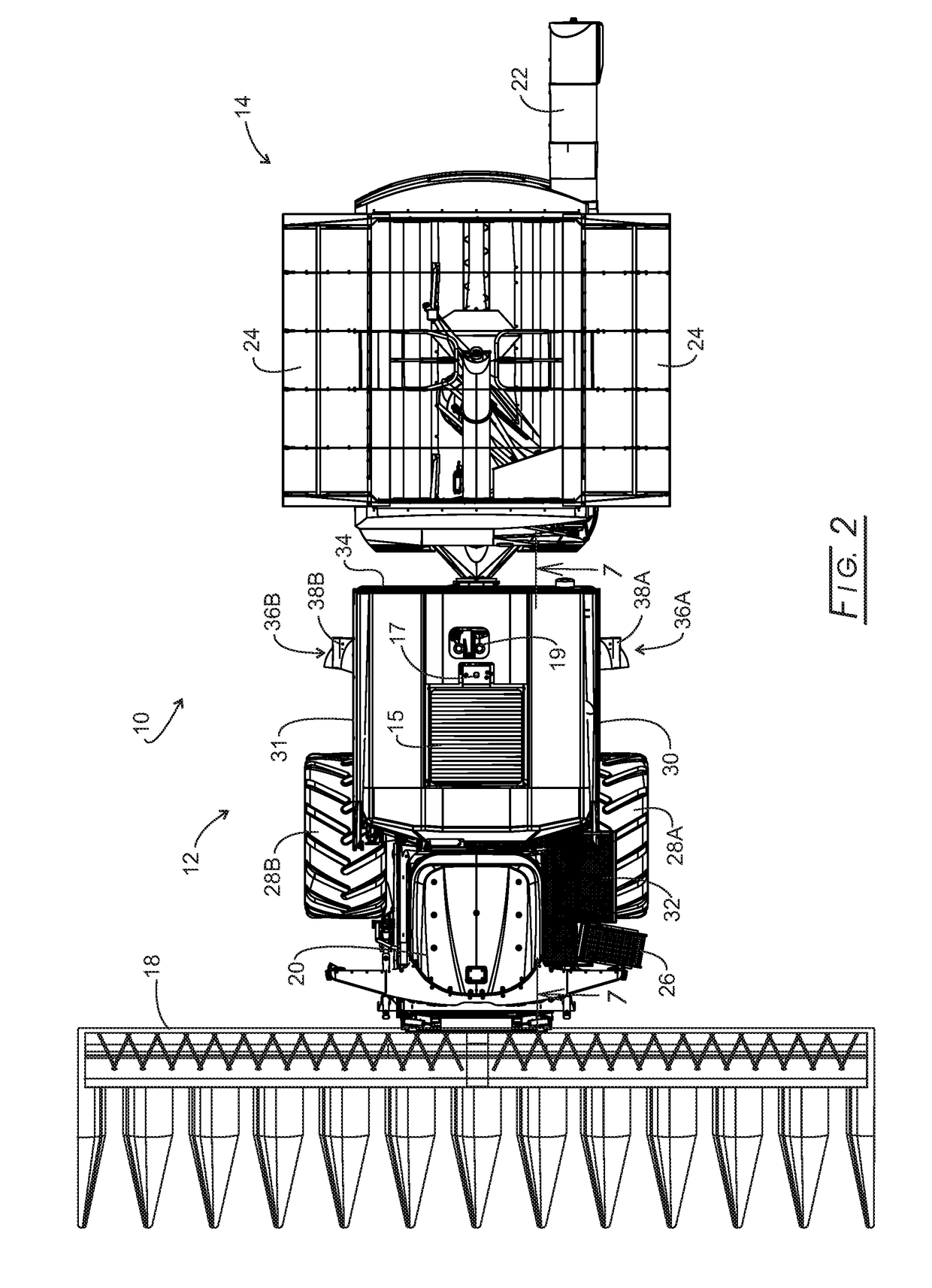Bonus Sieves and Tailings Return for an Articulated Agricultural Harvesting Combine
a combine and bonus sieve technology, applied in the field of articulated combine design, can solve the problems of low cleaning system capacity of the machine, ineffectiveness, and literally inability to raise the sieve high, so as to increase the relative area of the cleaning sieve and increase the effect of mog
- Summary
- Abstract
- Description
- Claims
- Application Information
AI Technical Summary
Benefits of technology
Problems solved by technology
Method used
Image
Examples
Embodiment Construction
[0029]First and foremost, the articulation architecture of the disclosed harvesting combine permits the power processing (front) unit (PPU) to contain much wider sieves starting at the front of the machine, because the separator frames are wider inasmuch as no rear steering tires / wheels are necessary. This articulation architecture also allows the wider sieves to remain lower in the separator and still be below the threshing rotor. And equally as fortuitous for the sieve area is that, since there is no oscillating rear axle within the area of the separator, the sieves can be configured to be much wider once they progress rearward of the large front tires.
[0030]Digging into the science of sieve operation, the sieves are asked to accept the grain as well as the Material Other than Grain (MOG) that is expelled by the rotor through the concaves and grates that are located directly above the sieves. The ability of the oscillating sieves and the air being pushed up through the sieves to s...
PUM
 Login to View More
Login to View More Abstract
Description
Claims
Application Information
 Login to View More
Login to View More - R&D
- Intellectual Property
- Life Sciences
- Materials
- Tech Scout
- Unparalleled Data Quality
- Higher Quality Content
- 60% Fewer Hallucinations
Browse by: Latest US Patents, China's latest patents, Technical Efficacy Thesaurus, Application Domain, Technology Topic, Popular Technical Reports.
© 2025 PatSnap. All rights reserved.Legal|Privacy policy|Modern Slavery Act Transparency Statement|Sitemap|About US| Contact US: help@patsnap.com



